Photo Source: DWI
Germany has a lot to offer, with 13 regions producing a wide range of grape varieties and diverse wine styles from dry to sweet and still to sparkling. But German wines are all united by their fresh acidity and purity thanks to the country’s cooler climate. For a refresher on the country’s climate, geography and grape varieties, we recommend reading this blog.
Take a deep dive into some of Germany’s winegrowing areas below.

Rheinhessen
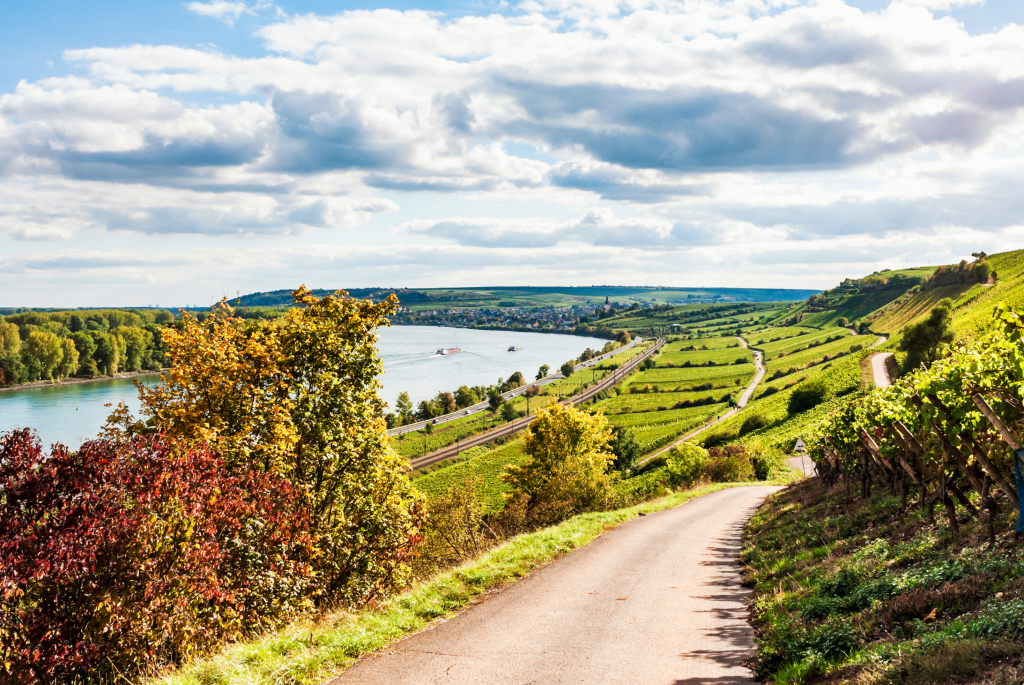
Rheinhessen is Germany’s largest wine region producing a wide range of wines, from Riesling, Silvaner and Pinots to lesser-known red varieties such as Dornfelder and Portugieser. The region is characterized by its hilly landscape and vast farmlands, with Rheinhessen often called the “land of a thousand hills.” Bordered by the Nahe and Rhine Rivers, some parts of Rheinhessen feature steep sites, and vineyard soils typically are comprised of loess, limestone, and loam mixed with sand or gravel soils. The region is one of Germany’s warmest and one of the driest in Central Europe, producing pleasant, fragrant wines that are both elegant and easy-to-drink.
Pfalz
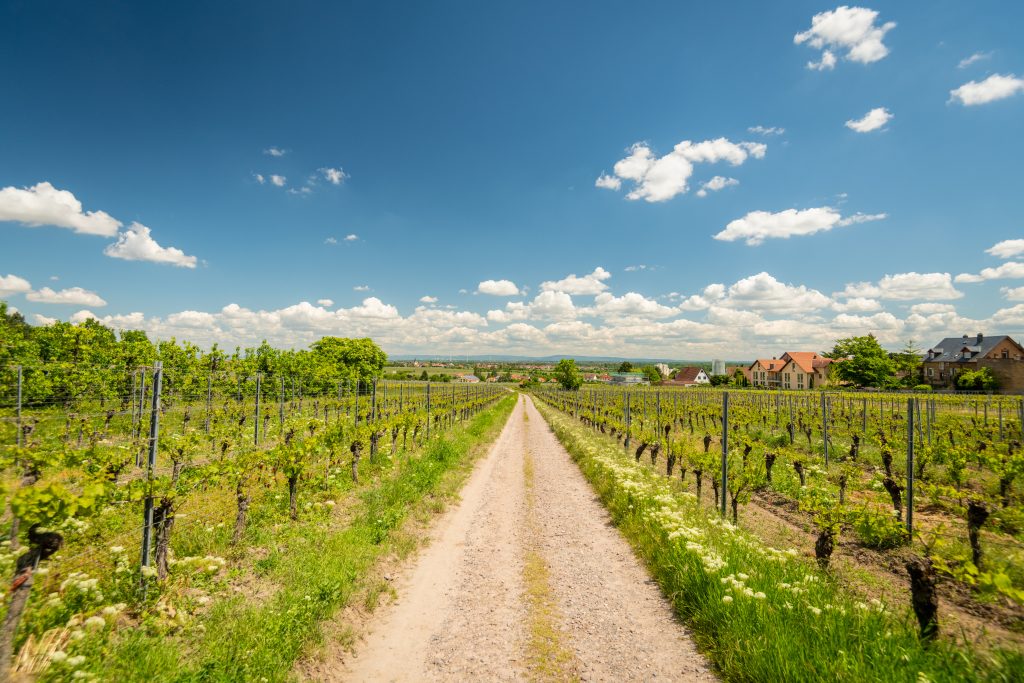
Photo Source: Pfalz.de_zumwohldiepfalz
Germany’s largest red wine region and one of the largest regions by area is the Pfalz, or Palatinate. This region produces every fourth bottle of German wine purchased within the country. The Pfalz produces mild, pleasant white wines rich in bouquet and full of body, typically from Riesling and Müller-Thurgau for white wines, as well as complex red wines from Dornfelder and Pinot Noir. As a result of the slopes of the Palatinate Forest, the region has a mild climate with a lot of sunlight, contributing to 40 percent of the vineyard land devoted to red grapes.
Baden
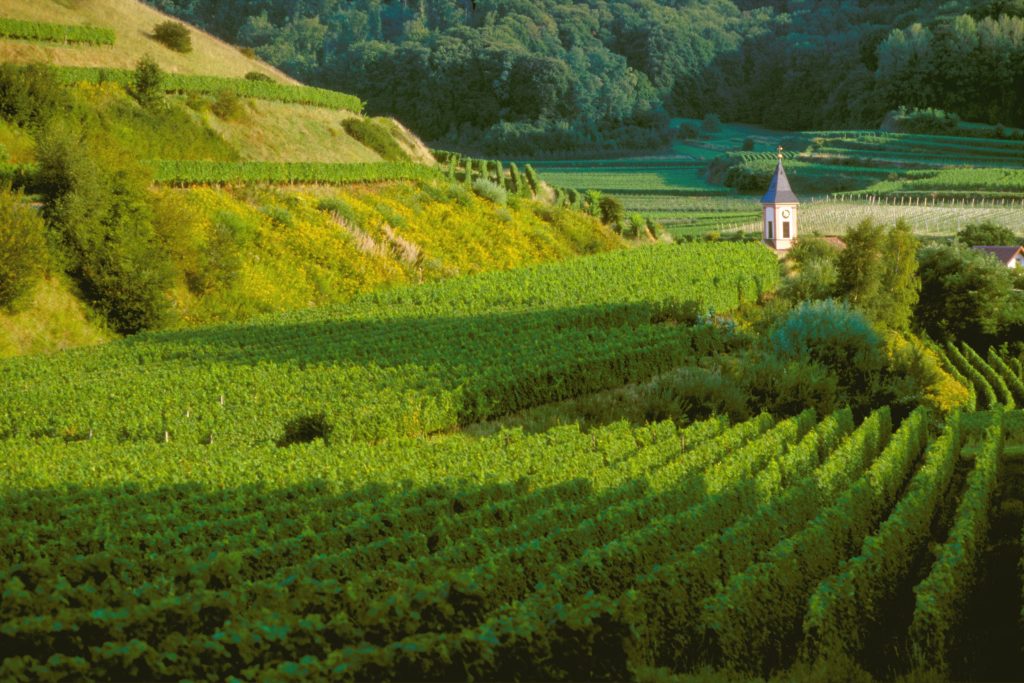
Baden is the southernmost and warmest of Germany’s wine regions. Nearly half of the vineyards throughout the region are planted with Pinot varieties including Pinot Noir (Spätburgunder), Pinot Gris (Grauburgunder) and Pinot Blanc (Weissburgunder). These varieties thrive thanks to the longer hours of sun and warmer summers. Home to vineyard sites atop an extinct volcano and with a unique Mediterranean climate, Baden produces powerful and complex wines with an international reputation.
Mosel
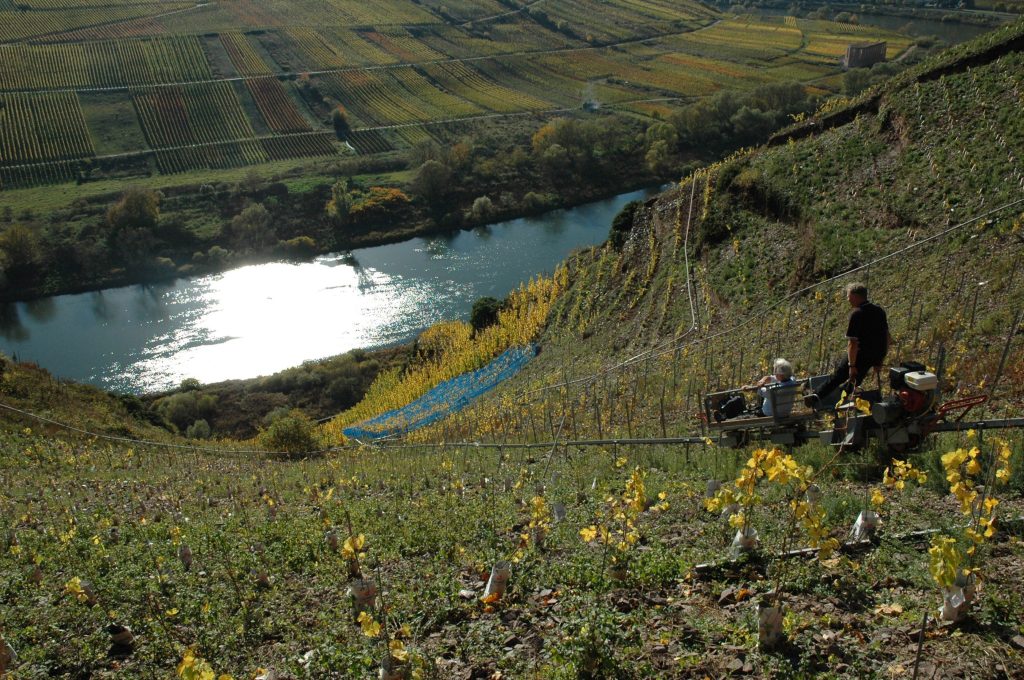
Regarded as the oldest wine region in Germany, the Mosel’s tradition of winegrowing dates to Roman times. The region is named for the serpentine river that runs through the middle of the region which creates steep banks perfect for wine growing. These vineyards are among the steepest in the world, some with a 70-degree gradient, with such drastic inclines that nearly all vines along the banks must be picked by hand. The Mosel is world famous for producing mineral-rich and balanced Rieslings with a pale color, light body and refreshing acidity.
Rheingau
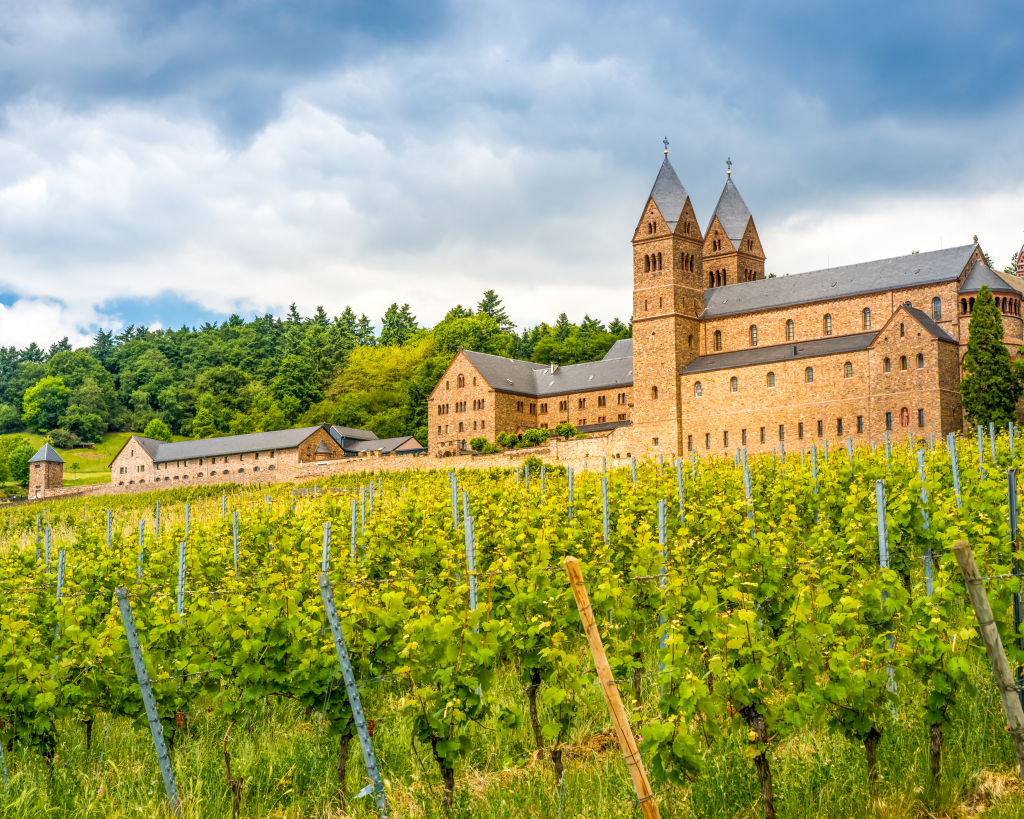
Considered the birthplace of Riesling, the Rheingau region sits in the Upper Rhine Valley and is home to stony south-facing slopes and wines with distinct minerality and racy acidity. The region is known for producing the first late harvest Riesling, or Spätlese, in 1775 after a courier delivering permission to begin grape harvest was delayed several weeks, allowing noble rot to increase sugar levels of the grapes and producing a rich style of Riesling. Since then, vintners across Germany have dedicated a portion of the harvest to be picked later in the season to allow for botrytis. The region is also home to Geisenheim, a town with some of the most highly regarded wine research and teaching institutions in the world.
Other Notable German Regions
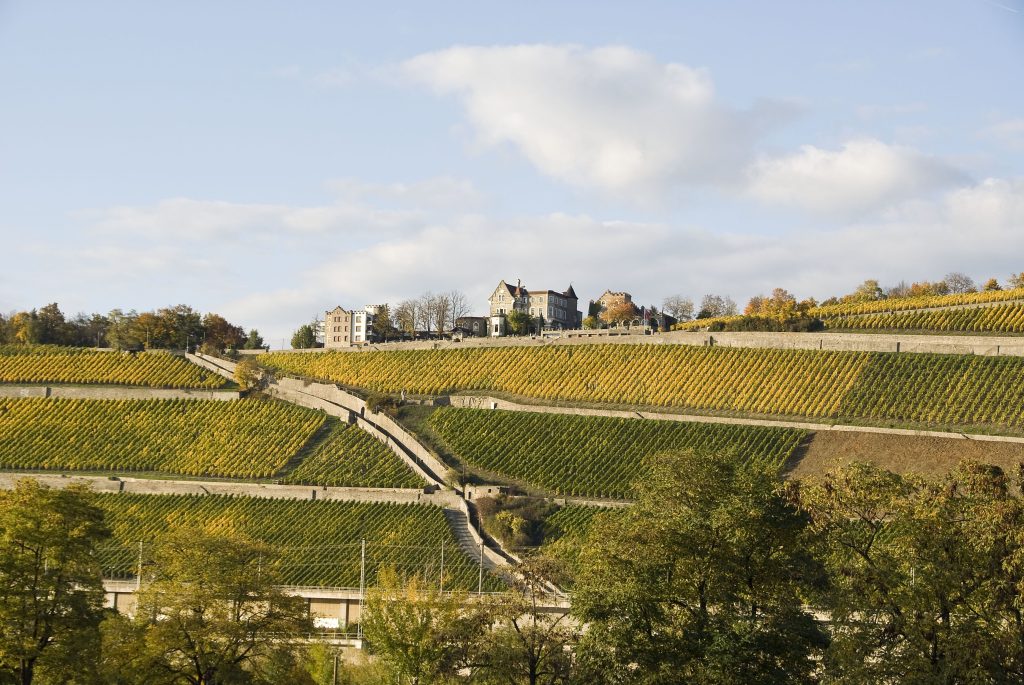
While all of Germany’s 13 winegrowing regions offer exceptional wines, a few more recognizable regions commonly in U.S. wine aisles include Württemberg, Franken and the Ahr.
Württemberg is a rural, hilly countryside and one of the few places in the world that grows the Trollinger grape, with most of it consumed locally. 70% of the region’s vineyard area is planted with red wine grapes that produce a range of red wine styles, from light and fruity to deeply-colored and rich.
East of Frankfurt, Franken is a champion of the Silvaner grape. The region is known for its fuller-bodied, drier and less aromatic wines of high quality, traditionally bottled in a Bocksbeutel, a flat, round-shaped bottle with a short neck.
The Ahr is one of Germany’s smallest regions with vineyards extending only about 15 miles along the Ahr river. About 85 percent of the region’s vineyards are dedicated to producing fine red wines. In fact, red wine accounts for four out of five bottles produced in the region, mainly made from Pinot Noir and a rare variety called Pinot Noir Précoce.
Whether you’re a seasoned wine aficionado or a newcomer, Germany’s wine regions promise a unique experience that will leave you looking forward to uncorking the next bottle! Find a tasting near you on our Events page to try a few wines that Germany has to offer.
Thirsty for more? Follow Clink Different’s Instagram and Facebook to stay up-to-date on the latest blogs and upcoming events.
